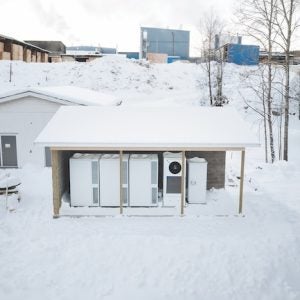GE Harris has recently won a $5.5 million contract for substation automation equipment with Comisión Federal de Electricidad (CFE) of Mexico. Ordinarily, such an announcement would not cause a great deal of interest except for those directly involved.
However, GE Harris claims that the system being installed is the “most advanced substation automation system available in the marketplace today.” What justifies this bold claim?
Utilities that are automating for the first time or doing a major upgrade are at an advantage over utilities with well-developed technologies for controlling substations, as investment is expensive, and the older technologies do an adequate job. CFE decided that it could save a lot on wiring and installation by using the new technology, and gain major advantages in functionality. When finally installed, the CFE system of substation automation will be a world leader.
In 1994, seven pilot projects were set up in Mexico. These SICLE (Local Information and Substation Control System) projects were designed to automate the country’s substations. In addition to performing the traditional functions of a substation, SICLE was designed to be the information and control centre of the substation.
The new contract will be for SICLE to be installed in 35 transmission 230kV and 115 kV substations, with 7 sites located the Sureste Area of Transformation and Transmission (ATT), 13 sites in the Norte ATT, and 15 sites in the Baja California ATT. The first sites are due to be operational by the end of 1999. The system will consist of the following:
In the pilot projects, SICLE’s local computer subsystem (SSL) uses two workstations interconnected through an Ethernet LAN. One workstation is for the operator, the other for the engineer and for special applications.
The new contract learnt from the pilot project, and now includes a number of improvements and upgrades. GE Harris decided to: make the system open for connections with other suppliers by use of DNP with a LAN/WAN (Local Area Network/Wide Area Network); use advanced intelligent electronic device (IED) technology to enable the utility to avoid the necessity of buying a separate RTU, sequence of events recorder, digital fault recorder, etc; and extend the library of protocols to enable more devices to be integrated into the system, thus adding to flexibility. As a result, the improvements included:
Field data obtained from the distributed data acquisition system is fed to the SSL, enabling control of the remote substation devices. The system’s digital acquisition provides one millisecond resolution. The SSL can also be accessed remotely over CFE’s wide area network, enabling remote operators to obtain information resident in the substation computer system.
A key design element is that the system is based on open software platform architecture. This makes software development and integration possible without participation of the system’s original supplier, enabling CFE to develop its own custom applications. This keeps the system open for development of automation and computing applications, an important option for a power substation that is in a constant process of improvement.
Examples of such custom applications include real time and historic information reports, monitoring of transformers and circuit breakers, operator’s electronic logger, energy balance of the substation, fault analysis, preventative and predictive maintenance of equipment, inventory and other functions.
Three particular custom applications are of note. A thermal model for real-time transformer modelling was developed, and two applications were integrated into the real-time system. The first of these is a static database related to maintenance of the SIMATRAP power transformers, and the second is a third-party software package to enable utilisation of information from protection relays.
The thermal model for real-time monitoring of transformers is based on IEEE/ANSI load models to predict oil temperature employing environmental temperature and load current. The model was adapted for use with the in-line transformer, and is given by equation 1:
Every two minutes, a prediction of the oil temperature is performed, and the result compared with the real measurement. The remainder of the topoil temperature is calculated as the difference between the prediction and the measurement.
This remainder is compared against an established limit, and if the limit is exceeded, an alarm is activated. User-defined limits designate the alarm as ‘warning’ or ‘critical’, depending on the system readings.
General benefits
Some benefits of the system include:
| Vision of the future |
another-utility-that-is-looking-into-ways-of-developing-a-substation-automation-programme-for-the-future-is-pacific-gas-and-electric-pg-e-pg-e-concentrated-on-the-following-three-drivers-safety-cost-reduction-and-improved-reliability-these-led-to-three-areas-of-focus-information-management-and-communications-equipment-performance-and-work-practices-this-in-turn-led-pg-e-to-the-following-vision-of-the-substation-in-2020-li-it-will-be-unmanned-fully-automated-and-remotely-operated-li-i More Relevant |






